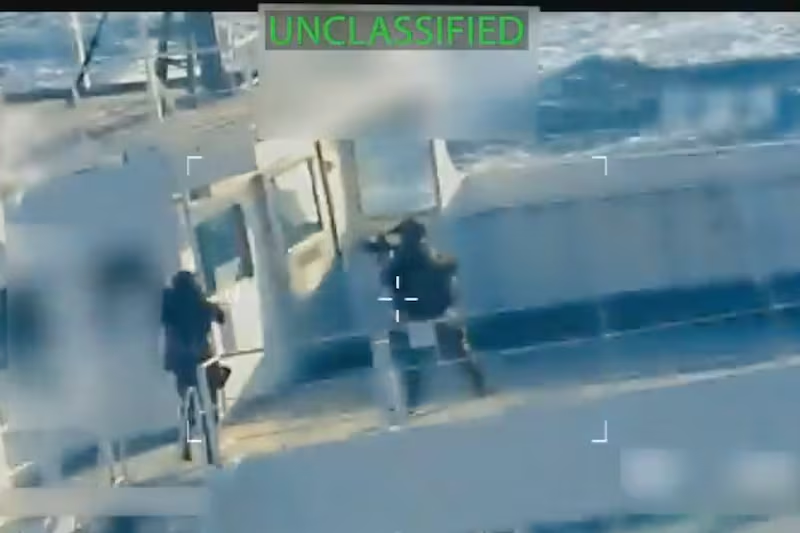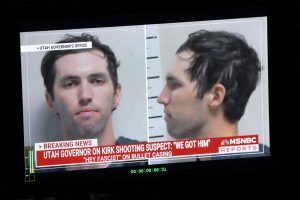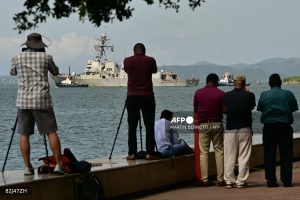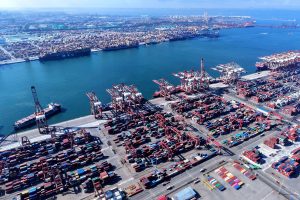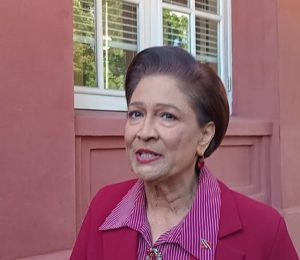“The plug failed, and when it failed, the entire Gulf of Paria was trying to rush into that pipeline at about 4,000 lbs per square inch.” – Rushton Paray
By Chantalé Fletcher
MAYARO MP Rushton Paray is questioning whether there were proper safety mechanisms in place for the project where four divers lost their lives on February 25 at Beth 6 of Paria Fuel Trading Company.
He asked, “Was there a Level 2 (L2) Risk Assessment brief conducted by Paria Fuel Trading Ltd and the private contractor LMCS with those involved?”
On Wednesday, speaking on Mr Speaker on Multicultural Television with host Kieron Samaroo, Paray who had over 25 years in the energy sector as an ICTV Process Engineer, described two safety standouts that should have taken place.
He said a toolbox meeting involved everyone, who would discuss the details of the job and safety measures before approval was given for its start.
Paray said that for subsea welding, a specialist contractor with experience in this type of job should have been present.
He said, “This was where a risk assessment was done at the highest level so key companies with relevant technical experience that worked with the HSE department would sit with the contractor.”
The workers would be told the known risks of the job and they would have to detail the job in return.
Paray said the companies also had to discuss methods, risks associated with the job and the mitigations to be executed.
He said the contracting company does not have a Tactical Response Unit (TRP) nor the emergency systems, which was why Paria as the owner of the assets had to be part of the conversation.
Paray said a “List of What Scenarios” would be used as a guide from experiences across the world, to determine if something occurred, what would be the method to execute.
“So at the end of the exercise the contractor who is doing the work is fully aware of what is in place in the event of an emergency, the thought process of how we’re going to deal with any issue was trashed out at that meeting.
“And the company decides yes we have all these things in place, then the work would begin.”
Paray said a diving bell would have brought relief for the divers. He said that before work on a line was conducted, a (SIMOPs) Simultaneous Operations Risk Assessment was necessary.
Paray said, “So while the divers were working on the pipeline, the L2 risk assessment would have determined what other action was happening simultaneously while these fellas worked.”
He added the lines were built with monitoring equipment, pressure sensors which also could tell the speed and flow of fuel and also control its speed.
“So why use a plug, if these lines have all the sensors that could be controlled, why could they not turn it off? Are these systems working, where these pieces of equipment are maintained?”
Paray said the plug was placed in the line which created a barrier.
He said she spoke to experts. The MP added, “The plug failed, and when it failed, the entire Gulf of Paria was trying to rush into that pipeline at about 4,000 lbs per square inch.”

Paray explained the calculator for Delta P where for every 10 inches of diameter, you would look at about 1,700 PSI.
“So this is a 30-inch line with an opening that was wide enough for a full-bodied man with a tank to slip into too.”
He added that a diver in a subsea activity would not notice a crack until reaching it, which would pull him into the pipeline.
Paray said, “In choosing a plug for a 30-inch pipeline, the vendor supplying that plug had to be sure as this would have come out in the L2 risk assessment.”
He added that the L2 risk assessment would have identified a ruptured line in the diving incident.
Paray described it as nothing strange, as it also occurred with pilots.
He said, “If the L2 assessment was properly done or if one was done, that would have been the trigger for the Incident Commander on the site to trigger right away.
“Clearly that did not happen, after eight to 12 hours they were still standing trying to figure out what to do. As in my respectful view, no L2 meeting may have been done to measure the risk assessment for this particular incident.”
Paray asked, “Is the board more interested than posting profits to show that the split-up of Petrotrin was working rather than spending on health and safety to protect the lives of employees?”
“Is Heritage and Paria more interested in posting beautiful after-tax profits by cutting back on health and safety and the cost to maintain equipment?”
He wanted to know how much of the hundreds of millions of dollars in profit Paria made last year was spent on health and safety.
![]()






